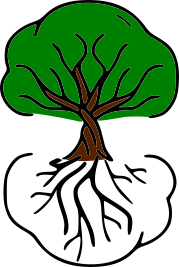While shopping around your local grocery store, you might have seen projects in the organic section with the brand title “Cascaidan Farm Organic: Founded in the Skagit Valley, WA since 1972.” The products can be found in stores nation wide. Last week, however, I took a bicycling adventure to the Roadside Stand of the farm. It serves not only as a great place to get snacks on a long road trip, but also serves as an environmental education tool in the valley.
I’ll let them tell their founding story:
The story of Cascadian Farm begins with the story of our founder, Gene Kahn. 40 years ago, Gene was an idealistic 24-year old grad-school dropout from Chicago, who just wanted to make a difference in the world. He recognized the delicate balance between nature and humans. Inspired by reading “Silent Spring” and “Diet For A Small Planet”, Gene wanted to go back to the land and farm in a way that would not harm the natural beauty of the earth or her inhabitants. So he set out to farm organically on a little stretch of land next to the Skagit River in the Cascade Mountains of Washington. –Cascadian Farm
That farm grew and grew over the years into the powerhouse it is today. You can take a virtual tour of their whole farm to see how they work in and with the landscape.
My little excursion started last Saturday in the bright, sunny afternoon. Biking about eight miles from the Blue House Farm, I reminisced on my first experience with stand; last summer within the first few weeks of my graduate residency. Since it is closed during the winter months, I peddled with great anticipation to experience Cascadian Farm again.
Blue Berries not quite ready to be picked.
Once getting to the stand (just east of mile marker 100 on WA SR 20) you are immediately met by a full field of blue berries! During the summer and fall the bushes are packed full of berries, ready to be picked. These are a great snack on a road trip to the Methow Valley.
The stand also serves as an environmental education tool to visitors. Posted all around the area are signs explaining basic organic practices like Green Manure and Cover Crops.
For a more tactile experience there is also a Pollinator Flower Garden. Describing “beneficial” insects like ladybugs, lacewings and bees, this gives the general public a personal connection with our local pollinators. Around the garden are various local flowers that encourage pollination. When I arrived dozens of bumble bees were busily working in the garden. By providing a natural place to pollinate, the farm hopes that the pollinators will flourish enough to pollinate the plants on the main part of the farm.
A pollinator working hard in the Pollinator Flower Garden
The Roadside Stand also has the only thing that could make an afternoon biking down the Skagit Valley and learning about local pollinators better: ice cream! Who knew environmental education could be so…tasty!
You just can’t beat some great icecream after a bike ride.
*I originally wrote this article for Chattermarks, the official blog of the North Cascades Institute. You can find all of my posts on Chattermarks here.





